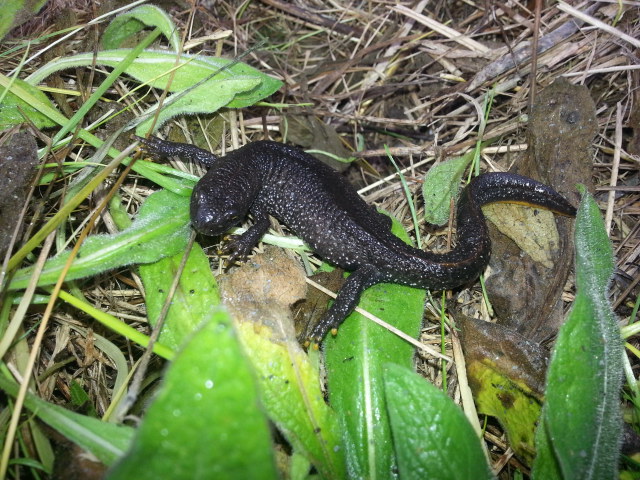In 2014 Udall-Martin Associates Ltd. (specialist ecological consultancy) carried out a great crested newt survey for proposed building extension works at a care home in Birdwood, Gloucestershire. The proposed development site and immediate surrounds comprised of garden areas, a grassland field, mature hedgerows and a pond. The site is situated within a village within the Gloucestershire countryside, surrounded by residential properties.
Initially, a Habitat Suitability Index (HSI) form was completed for the pond. A system using HSI scores to define pond suitability for great crested newts is on a categorical scale. Also, the proposed development site was assessed for its potential suitability for great crested newt terrestrial habitat. According to the HSI assessment the pond provides poor breeding conditions. It was considered that in this instance due to the limited terrestrial habitat to be affected, that precautionary mitigation would be appropriate and further full great crested newt surveys would not be needed.
A great crested newt survey report was produced detailing the results of the surveys and a precautionary mitigation method statement for great crested newts was also produced, which will be used to support the planning application for the proposed development. The method statement detailed the measures to avoid/minimise the risk of harming and/or disturbing great crested newt during the proposed building development works. The measures involved timing of works, sensitive locations for compounds and temporary of equipment and materials, ecology checks and habitat modifications and a ‘tool box’ talk.
Great crested newts (GCNs) and their terrestrial habitat are protected by the Wildlife and Countryside Act 1981 (as amended) and are classified as European Protected species under The Conservation of Habitats and Species Regulations 2010. This makes it an offence to kill, injure or disturb GCN and to destroy any place used for rest or shelter by a newt. Development work can only be permitted to affect GCN and their habitat under a European Protected Species (EPS) licence from Natural England.
Should great crested newt surveys be required for a project, this would involve the following. The minimum survey effort required for pond to reasonably demonstrate an absence of great crested newt is torch survey, bottle trapping (involving setting bottle traps on an evening visit and collecting the traps the following morning) and egg searching on four site visits in suitable weather conditions between mid-March and mid-June, with at least two of these visits during mid-April to mid-May (English Nature 2001). If great crested newts were found on any of these visits then two further visits would be made (totaling six visits) to provide a population estimate.
Udall-Martin Associates work throughout the UK and extensively in the West Midlands (Birmingham, Herefordshire, Shropshire, Staffordshire, Warwickshire and Worcestershire), East Midlands (Derbyshire, Nottinghamshire, Lincolnshire, Leicestershire and Rutland), South West (Gloucestershire, Somerset, Dorset and Devon), South East (Oxfordshire, Berkshire and Buckinghamshire) and throughout Wales
If you require a great crested newt survey please contact Udall-Martin Associates for advice and quotations (T: 01684 540695; M: 07968 030448; M: 07954 160468).
